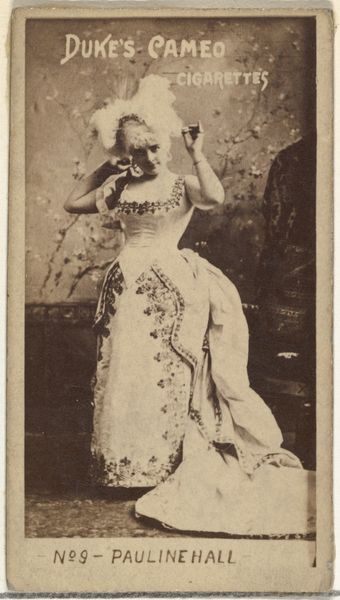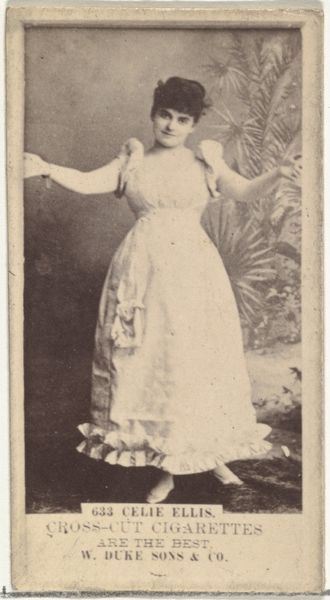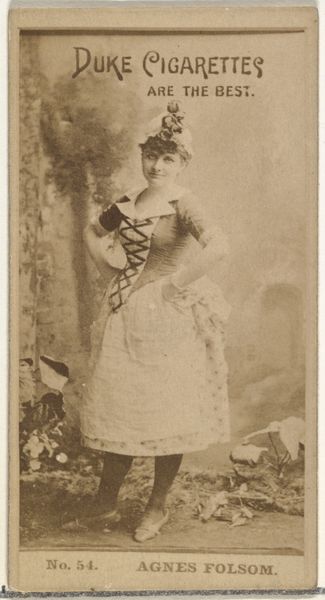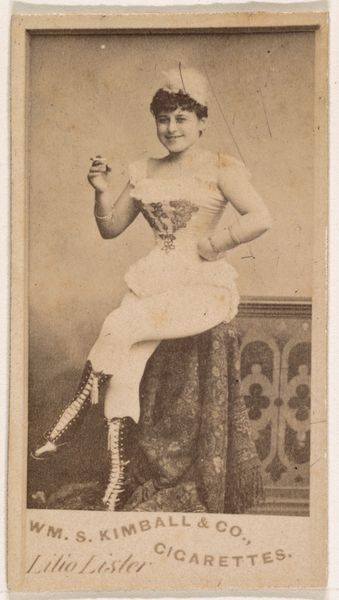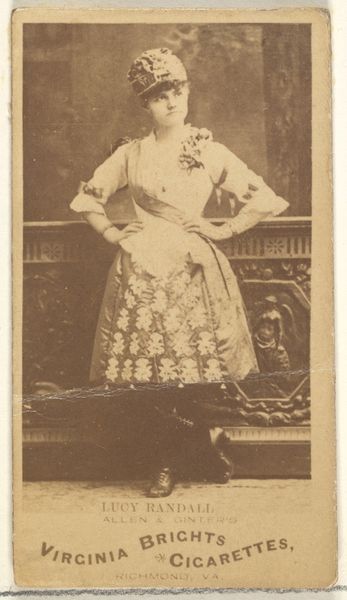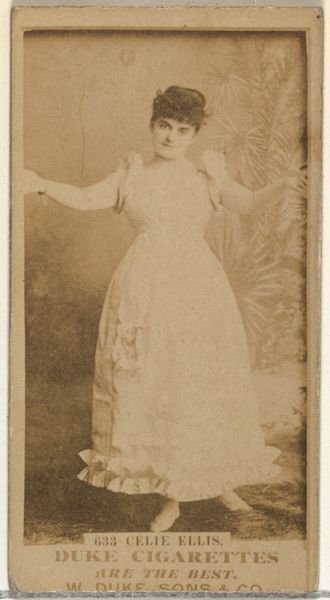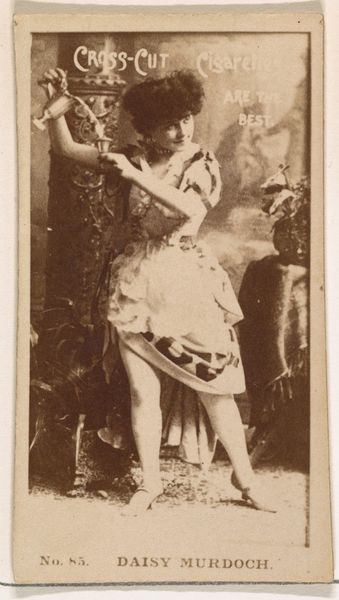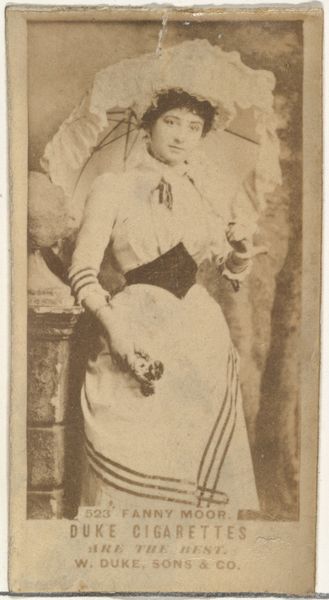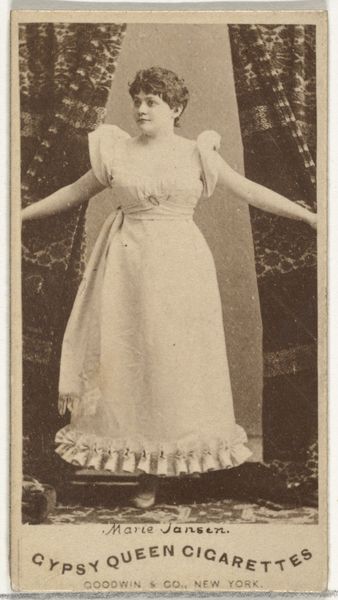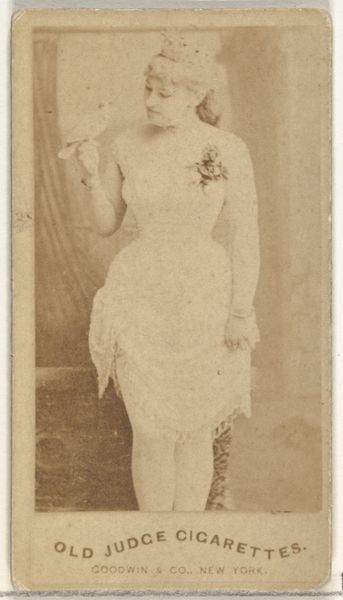
Card Number 80, Jansen, from the Actors and Actresses series (N145-1) issued by Duke Sons & Co. to promote Cross Cut Cigarettes 1880s
0:00
0:00
print, photography
#
portrait
# print
#
photography
#
realism
Dimensions: Sheet: 2 1/2 × 1 3/8 in. (6.4 × 3.5 cm)
Copyright: Public Domain
Curator: Let's turn our attention to "Card Number 80, Jansen," a portrait dating back to the 1880s, part of the Actors and Actresses series produced by W. Duke, Sons & Co. to advertise Cross Cut Cigarettes. It’s currently held here at The Met. Editor: It's remarkably subdued, considering its commercial origin. The soft sepia tone and somewhat staged backdrop give it this quaint, almost dreamlike quality, and yet that inscription “Cross Cut Cigarettes” looms on the canvas. Curator: Precisely, the sepia tone evokes nostalgia and a certain aestheticism, obscuring the fact that it's advertising tobacco. Images like this were aimed at broadening the appeal of cigarettes by associating them with cultural figures of the time. This is also “card number 80”, meaning the entire suite comprised a constellation of performers to admire, like talismans. Editor: And look at the woman's dress—the subtle ruching, the faint detailing. It screams "bourgeois aspiration," doesn’t it? She holds a fan in one hand, while awkwardly presenting a bouquet with the other; her waist is unnaturally cinched by the corset; those shoes look brand new, while her arms seem rather tense. The photographic technology employed to create these trading cards mass-produced images that turned humans into collectibles. Curator: Absolutely. Her very pose is meant to convey both approachability and status. She has one foot forward, appearing accessible, and it serves also to present her footwear. There’s also the floral pattern decorating her skirt, and around what appears to be a painted vase, signaling abundance and fertility. I agree about the corset: it’s a symbol of constructed femininity, a painful restriction packaged as refinement and grace, manufactured ideals and the body as the subject to imposed forces. Editor: A stark contradiction indeed, masking itself as a portrait of sophistication and charm when actually, it reflects the rising tide of consumerism. Curator: These images allow us to understand how cultural values and social hierarchies were reinforced through consumer culture. By making her photograph into an object available in conjunction with tobacco products, there is something vaguely sacrilegious, while elevating her status, and, the purchasers as well, to new heights. Editor: Seeing this cigarette card prompts a reevaluation of our own consumption patterns and our entanglement with industries of extraction today. Curator: It's a subtle artifact, laden with a rich symbolism that illuminates the cultural anxieties and desires of the late 19th century. Editor: Yes, it pulls back the curtain on the manufactured allure and hidden costs of commodities.
Comments
No comments
Be the first to comment and join the conversation on the ultimate creative platform.
